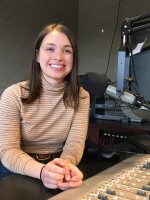Around 30 Summit County community members met Monday evening to learn more about the upcoming 2020 U.S. Census.
What is the census? That’s the first question the recent Summit County 2020 Census Town Hall sought to answer. Members from the League of United Latin American Citizens, or LULAC, presented information in Spanish and English about the once-per-decade effort to count everyone living in the United States. Summit County is pushing to increase the number of households counted in the 2020 Census. In 2010, only 55% of Summit County households responded.
The results of the census impact federal funding for programs such as Medicaid, the school lunch program and Pell grants for low-income college students. It also affects where services, like roads, schools and hospitals are located; and political power and representation. One of the presenters, Park City Television reporter Diego Romo, explained further.
“When we talk about power, we’re talking specifically about how the U.S. government uses our census data to reapportion seats in the U.S. House of Representatives," Romo said. "To give you an example of how important this is, in the year 2000—that's when we had the census that year—Utah missed gaining a fourth seat in the U.S. House of Representatives by just 80 people. We weren't able to get that seat until 2010, and that seat is currently held by Democrat Congressman Ben McAdams.”
The census asks households about a dozen questions, including residents’ names, age and race. The census does not ask about the respondent’s citizenship status.
Across the board, certain parts of the population are historically undercounted, such as immigrants, people of color, young children and renters. In Summit County, it’s also tricky to get a complete count of seasonal and rural residents.
One person who attended the town hall, Sabina, says she will respond to the census—it’s important to her.
“Because we need to count all the people living here for more money, for more power, for more—everything, education, and all this money. We need the money for us.”
Starting in March, the census is available for the first time online, though residents can also respond by phone and by mail. If households don’t respond by April 1, workers from the Census Bureau will begin visiting homes in person in May. More information about census efforts in Summit County can be found at summitcounty.org.



